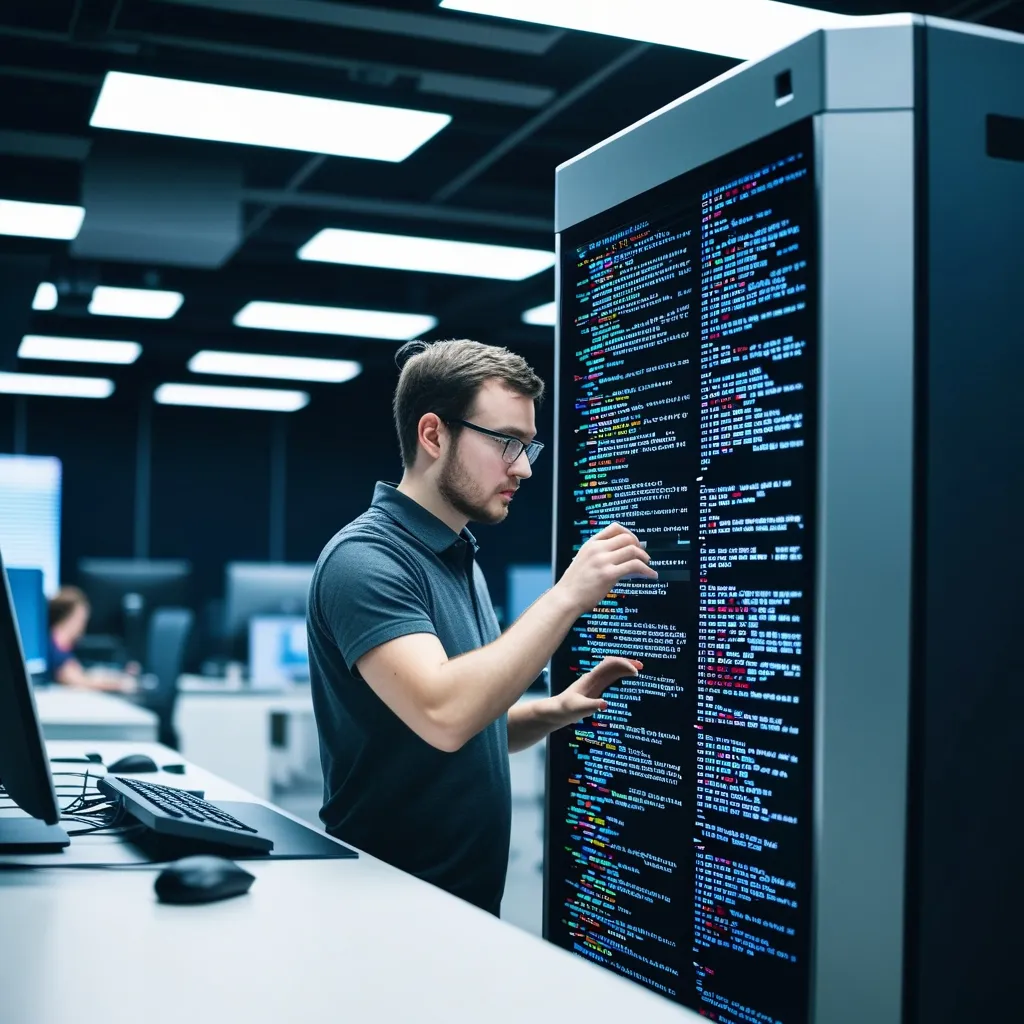The pull request notification appears in my inbox. I open it with a mix of curiosity and focus. This isn’t just about finding bugs; it’s our primary mechanism for knowledge sharing, quality control, and team alignment. Over the years, I’ve come to see code review not as a gate, but as a conversation—a structured dialogue about how we build things together.
Good reviews start long before the first comment is written. They begin with shared understanding. Our team maintains a living document of standards that covers everything from naming conventions to error handling patterns. This document evolves with our projects and becomes the foundation for constructive feedback.
When I prepare my code for review, I run through a mental checklist. Are the tests comprehensive? Is the documentation clear? Have I considered edge cases? I’ve found that a small investment in preparation dramatically reduces review cycles and keeps the discussion focused on important issues rather than trivial oversights.
def prepare_for_review():
"""Personal preparation routine before submitting code"""
checklist = [
run_tests(),
check_coverage(),
verify_documentation(),
review_error_handling(),
assess_performance()
]
return all(checklist)
The actual review process requires a specific mindset. I approach each review as both a teacher and student. There’s always something to learn from how others solve problems. I focus my attention on the areas that matter most: security implications, performance characteristics, and architectural consistency. Formatting issues can be handled by automated tools; the human review should concentrate on what machines cannot easily assess.
I’ve developed a particular method for providing feedback. Instead of saying “this is wrong,” I explain the potential impact of an approach and suggest alternatives. Questions work better than commands. “What would happen if this service goes down?” proves more effective than “Add redundancy here.”
// Before feedback refinement
// "This cache implementation is terrible"
// After refinement
// "I noticed the cache doesn't have an eviction policy.
// Under heavy load, this might lead to memory issues.
// Have we considered using a LRU strategy?"
The tools we use significantly enhance our review process. We’ve integrated static analysis that runs automatically on every pull request. These tools catch the straightforward issues—unused variables, potential null pointers, security anti-patterns. This automation frees us to focus on the subtle, complex problems that require human judgment.
Our team’s culture around reviews has developed through conscious effort. We emphasize that feedback is about the code, not the person. We celebrate when someone finds a critical issue early—it means we’ve saved future pain. Junior developers review senior code regularly, which serves as both learning opportunity and quality check.
Time management proves crucial for sustainable review practices. I limit my review sessions to 45-60 minutes to maintain concentration. For complex changes, I ask authors to break them into smaller, focused pieces. A pull request that touches multiple systems becomes several targeted reviews, each easier to understand and assess.
We track certain metrics to improve our process, but we choose them carefully. Cycle time helps us identify bottlenecks, while defect escape rate shows our effectiveness. We avoid metrics that might discourage thorough reviews, such as comments per review or approval speed. The goal is quality, not speed.
The most valuable reviews often involve back-and-forth discussion. I might suggest an approach, the author responds with concerns, and we arrive at a third option that’s better than either original idea. These conversations represent the best of collaborative engineering—the synthesis of different perspectives into superior solutions.
I’ve learned that effective reviewing requires adapting to context. A security-critical component deserves more scrutiny than a simple UI adjustment. A legacy system might require more conservative changes than a greenfield project. The review approach should match the code’s significance and risk profile.
Documenting review decisions has proven invaluable. When we encounter a particularly tricky problem or make an unusual design choice, we capture the reasoning in comments or documentation. This practice creates institutional knowledge and helps future maintainers understand why things were built a certain way.
The relationship between testing and reviewing is symbiotic. Comprehensive tests make reviews more efficient by demonstrating that the code works as intended. Meanwhile, reviews often identify missing test cases or edge conditions that weren’t considered initially. We’ve made it standard practice to review test code with the same rigor as production code.
I’ve noticed that the physical environment affects review quality. When I’m tired or distracted, I miss subtle issues. Now I schedule review time for when I’m most alert, and I avoid multitasking during these sessions. Each review gets my full attention—the code and my teammates deserve nothing less.
Our review process has evolved significantly over time. We started with basic checklist reviews and gradually incorporated more sophisticated techniques. We experiment with pair programming for complex features, use automated analysis tools, and occasionally hold group review sessions for particularly important changes.
The human element remains most critical. I make an effort to recognize good code and clever solutions, not just identify problems. Positive reinforcement encourages quality work and makes critical feedback easier to accept. A simple “I like how you handled this edge case” can make a significant difference in team morale.
I’ve come to view code reviews as one of our most valuable engineering practices. They catch bugs, certainly, but their greater value lies in knowledge sharing, quality consistency, and team alignment. Each review is an opportunity to learn, to teach, and to improve our collective output.
The practice requires ongoing refinement. We regularly retrospect on our review process—what’s working, what’s not, how we can improve. This continuous improvement mindset ensures that our reviews remain effective as our team and codebase evolve.
Ultimately, code reviews represent our commitment to quality and collaboration. They’re how we ensure that every line of code reflects our shared standards and values. They transform individual work into collective ownership, making our systems more robust and our team more capable with each completed review.






